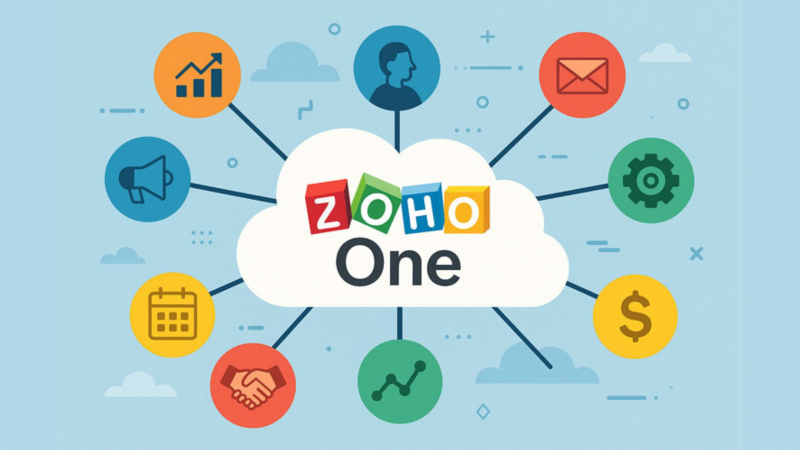Razorpay Business Model Explained: How the Fintech Giant Makes Money in India
Quick Snapshot: What Razorpay DoesService AreaWhat It OffersPaymentsGateway, payment links, recurring billing, international p
- by Shan 2025-08-05 12:10:28
Razorpay is one of India's fastest-growing fintech platforms, helping businesses big and small accept and manage payments online. Beyond just a payment gateway, Razorpay has built an ecosystem of financial services that drives growth and revenue. This blog examines how Razorpay makes money, why the business model works so well, and why it's the platform of choice for startups and large companies alike.
Quick Snapshot: What Razorpay Does
Founded in 2014 by Harshil Mathur and Shashank Kumar, Razorpay has grown into a full-stack B2B fintech platform trusted by 10Mn+ businesses, including Swiggy, Zomato, and BookMyShow.
Razorpay follows a B2B (business-to-business) model, offering digital payment and financial tools to merchants, startups, and enterprises. Their revenue engine runs on five main pillars: Every time a business receives a payment through Razorpay’s platform, Razorpay charges a small fee on the transaction. This varies depending on the payment method: UPI: ~0% to 1% Debit Cards: ~0.4% to 0.9% Credit Cards: ~1.75% to 3% Wallets / Net Banking: ~1.5% to 2% Reason it works: With billions of transactions taking place every month, any kind of fee generates a lot of revenue. Razorpay also has bulk pricing for large enterprises, which secures loyalty and volume. Key takeaway: Transaction-based fees are Razorpay’s primary and most consistent revenue stream. RazorpayX is their neobanking arm. It helps businesses handle banking tasks without relying on traditional banks. Services include: Automated payroll for employees and freelancers Corporate credit cards for teams Vendor and tax payments Expense management tools How it earns: Razorpay charges subscription fees, service charges on payouts, and earns commissions on partner banking products. Value addition: Saves finance teams time while giving Razorpay a recurring revenue stream. Razorpay uses its access to business transaction data to offer short-term working capital loans to merchants. Loans are typically disbursed quickly with minimal paperwork. Offered based on real-time payment performance and transaction history. Partners with NBFCs and banks to underwrite risk. Revenue comes from: Interest on loans Loan processing fees Commission from lending partners Why it scales: Lending builds stickiness and creates another income layer beyond payments. Razorpay Subscription is a tool for businesses offering: SaaS services Digital subscriptions Online coaching Gym/fitness memberships It automates: Recurring billing Invoicing Payment retries and failure handling Business model: Charges a fee per successful recurring transaction or monthly usage fee. Use case: Ideal for startups and platforms with predictable revenue streams. Payment Links: Freelancers and small business owners can send links via WhatsApp, SMS, or email to collect payments instantly. Razorpay Store: Lets businesses set up a simple online store with no developer help. Earning model: Charges a flat fee per transaction processed + optional monthly fee for premium store features. Smart move: Helps Razorpay tap into India’s growing SMB and creator economy. Razorpay earns referral fees from third-party integrations (like logistics, ERPs, accounting software) that are embedded in its platform. Razorpay also monetizes features like: GST-compliant invoicing Automated TDS payments Real-time analytics dashboards These may be bundled with paid plans or offered as add-ons. Insight: Razorpay needs to continuously innovate and upsell high-margin services like lending and banking. Integrated Ecosystem: One dashboard for payments, banking, and credit Trust & Brand Recall: Trusted by top Indian startups Strong Developer Support: Easy APIs and plug-ins speed up adoption UPI Adoption: Taps into India’s fastest-growing payment channel Note: Razorpay's edge lies in being a full-stack solution, not just a payments tool. Multiple Revenue Streams: Not reliant solely on transaction fees Deep Market Knowledge: Addressing pain points for Indian SMEs and Startups Scalable Infrastructure: Serving everyone from freelancers to unicorns Data Advantage: Leveraging payment data to fuel lending and banking decision-making If you're a business owner or fintech enthusiast, Razorpay’s model offers a roadmap for building sticky, scalable, and profitable B2B platforms in India’s digital economy.Core Business Model: B2B Fintech Platform
1. Transaction Fees from Payment Gateway
2. RazorpayX: Business Banking Services
3. Razorpay Capital: Lending & Credit
4. Recurring Payments & Subscription Billing
5. Payment Links & Razorpay Store for Small Merchants
Other Revenue Streams
Partner Commissions
Add-on Tools
Challenges Razorpay Faces
Key Strengths That Power Razorpay’s Growth
Razorpay vs. Competitors: Quick Comparison
Final Takeaways: Why Razorpay’s Business Model Works
Read Also: Top 5 Apps to Buy Digital Gold in India (2025): Safe, Simple & Secure

POPULAR POSTS
Pine Labs IPO 2025: Listing Date, Grey Market Premium, and Expert Outlook
by Shan, 2025-11-05 09:57:07
India’s Largest Unicorn Startups in 2025: Rankings, Valuations, and Trends
by Shan, 2025-09-18 10:32:48
Swiggy Launches Toing App in Pune to Serve Affordable Food Delivery — What It Means for the Market
by Shan, 2025-09-16 12:29:08
Trending Startup Ideas for 2025: Where Innovation Meets Opportunity
by Shan, 2025-09-05 11:56:43
19 Best Business Ideas to Start in India 2025: From Low Investment to High Demand
by Shan, 2025-09-03 10:58:15
How CRED Reimagined Credit Card Rewards into a Billion-Dollar Fintech Empire
by Shan, 2025-08-04 12:28:03
10 Successful Shark Tank India Brands Powered by Unicommerce
by Shan, 2025-07-29 10:36:54
RECENTLY PUBLISHED

Loan EMIs to Drop as RBI Slashes Repo Rate - Full MPC December 2025 Highlights
- by Shan, 2025-12-05 11:49:44

The Agentic Revolution: Why Salesforce Is Betting Its Future on AI Agents
- by Shan, 2025-11-05 10:29:23

Top 10 Insurance Companies in India 2026: Life, Health, and General Insurance Leaders Explained
- by Shan, 2025-10-30 10:06:42

OpenAI Offers ChatGPT Go Free in India: What’s Behind This Big AI Giveaway?
- by Shan, 2025-10-28 12:19:11

Best Silver Investment Platforms for 2025: From CFDs to Digital Vaults Explained
- by Shan, 2025-10-23 12:22:46





 Subscribe now
Subscribe now 